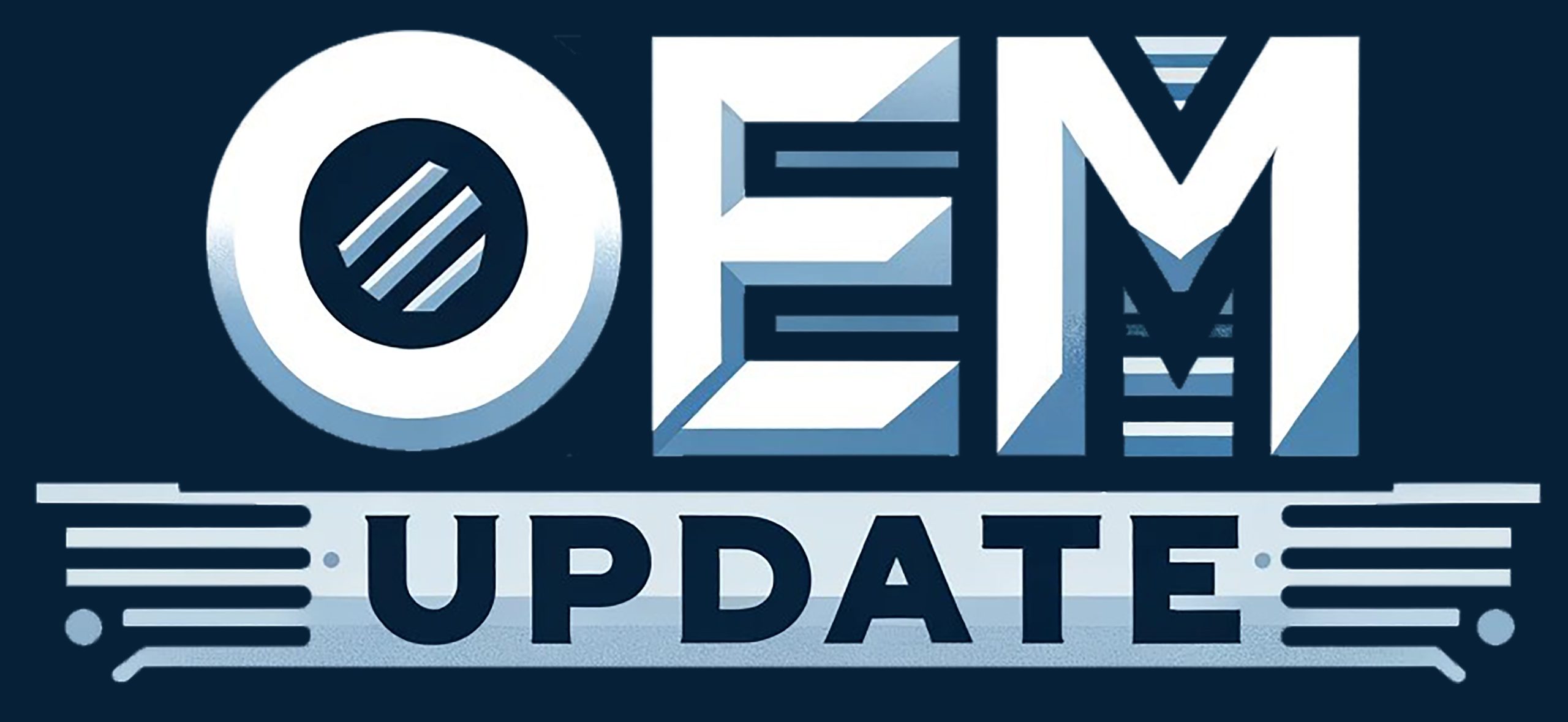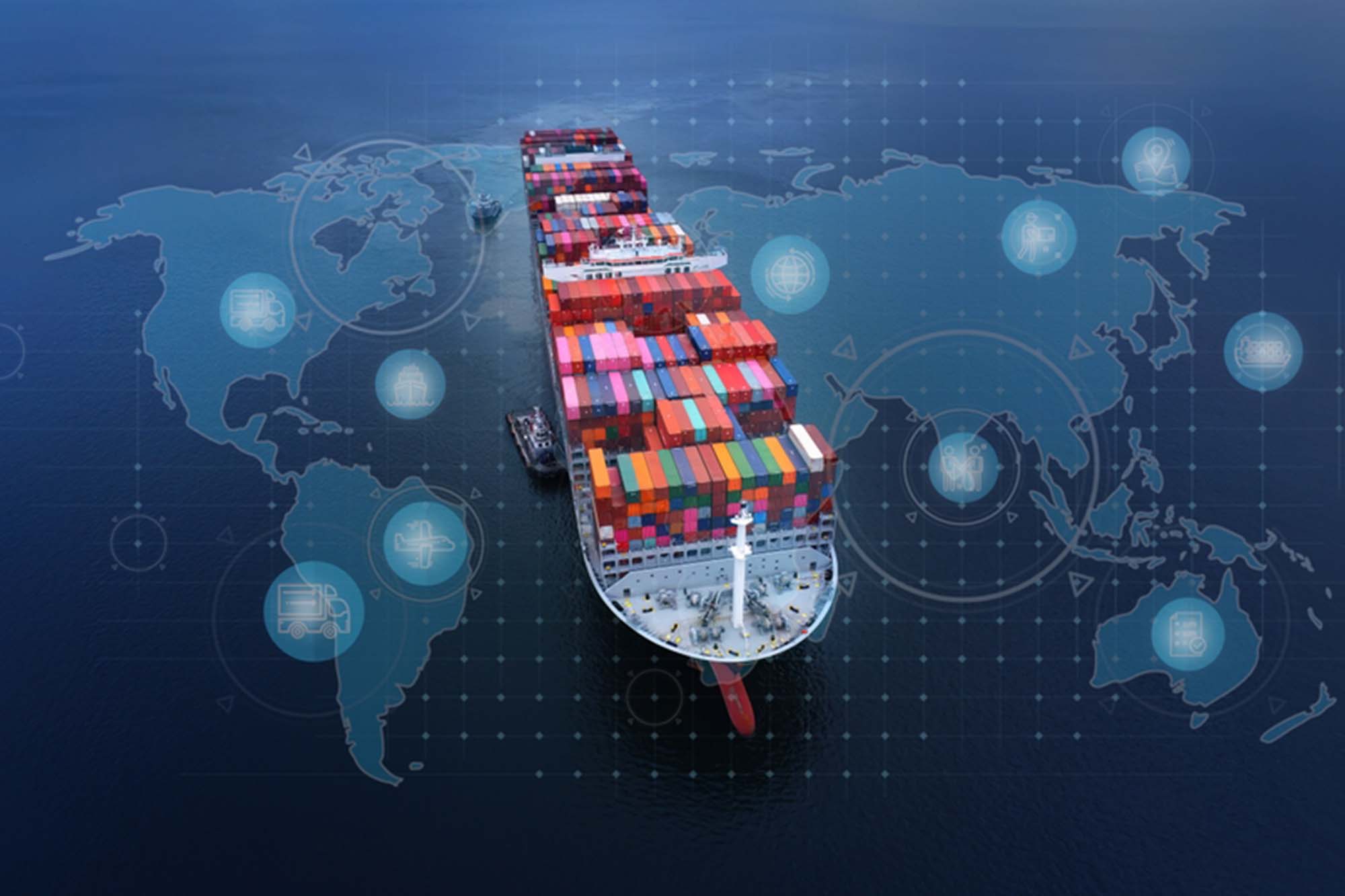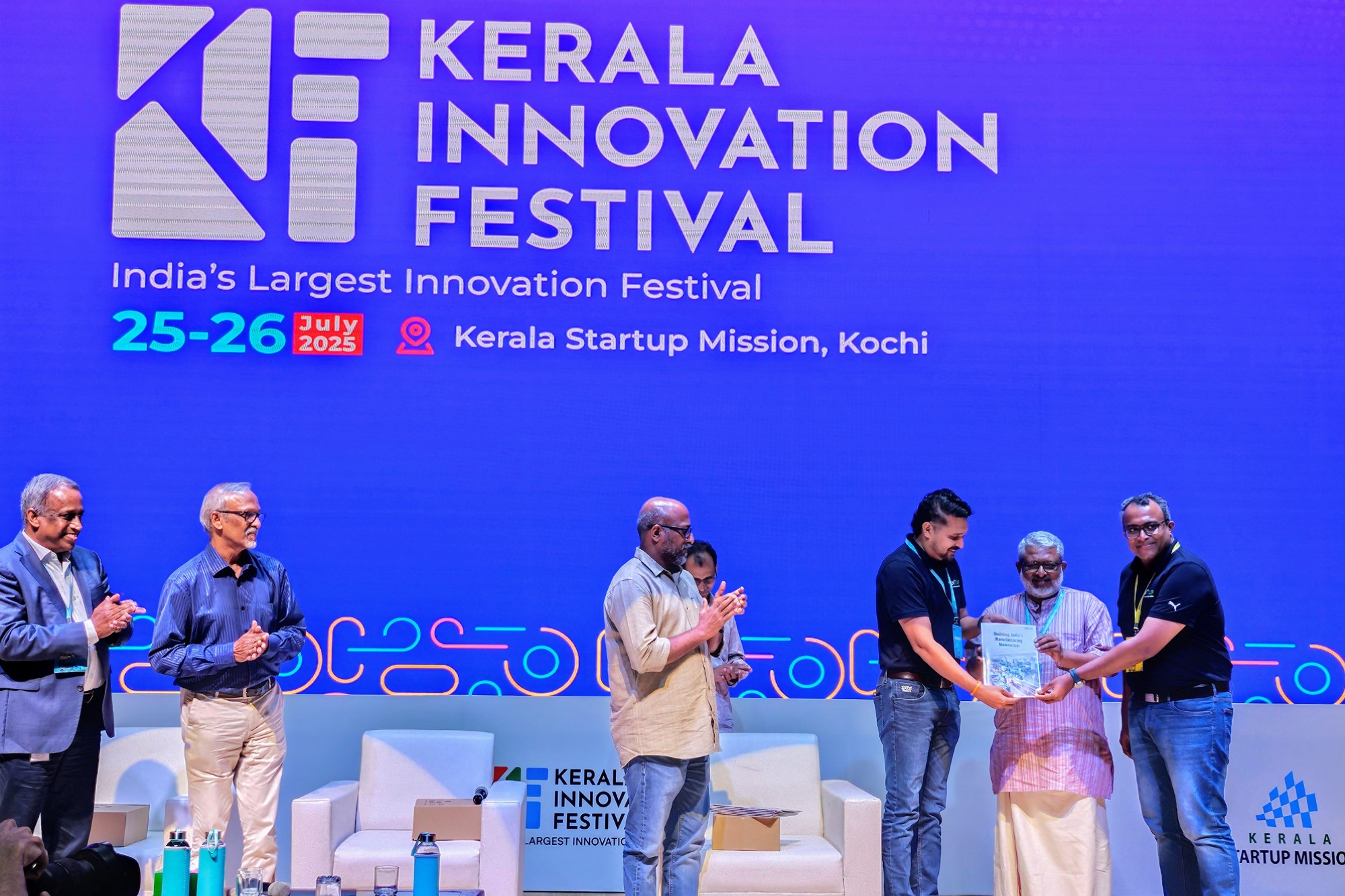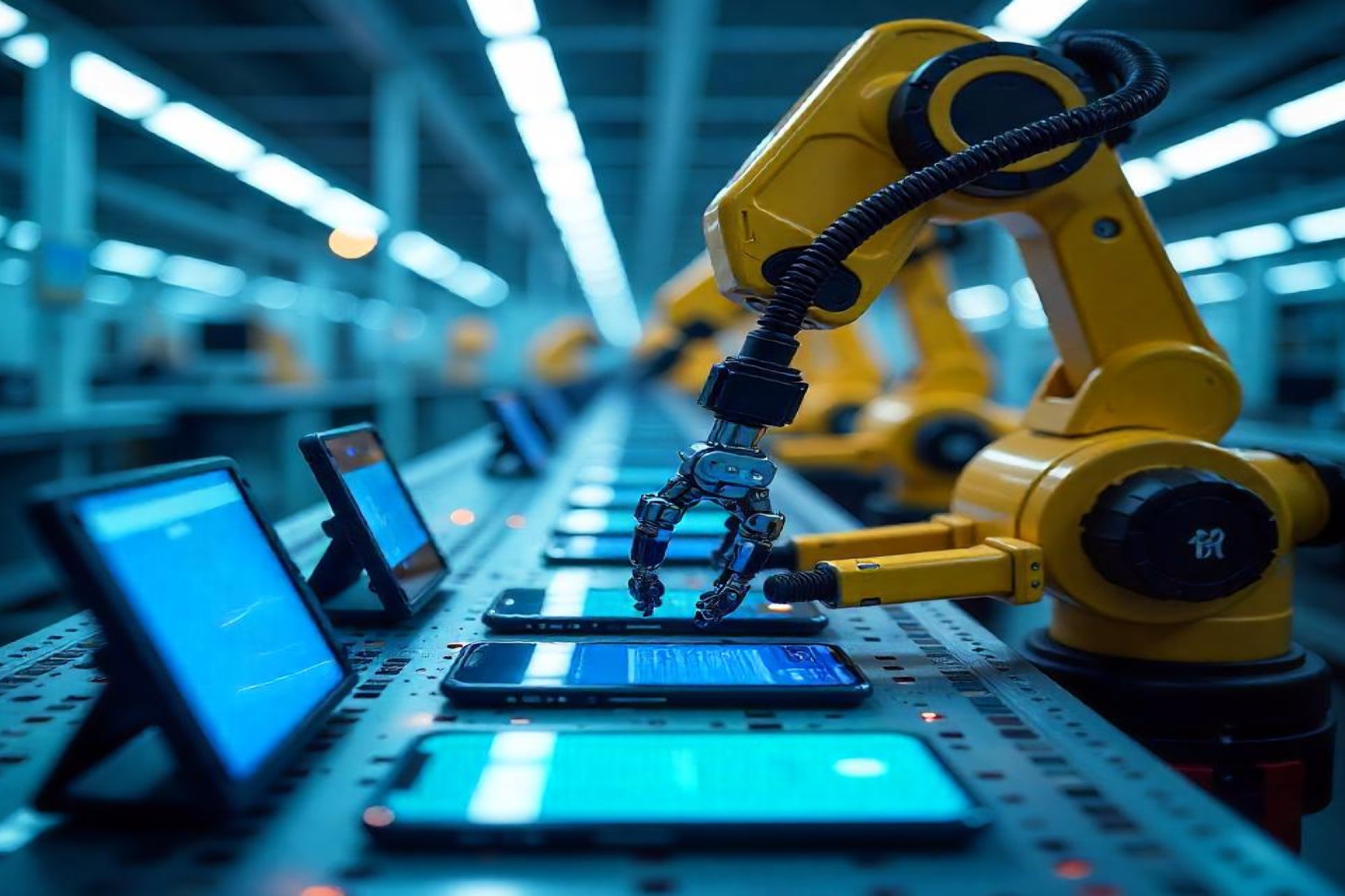Building a resilient route
By Staff Report June 5, 2025 7:54 pm IST
Similarly to the internet, where data, designs, and decisions move freely across borders, time zones, and teams, the supply chain provides the foundational platform for the global movement of goods, services, and value. Just as the internet connects billions of users into a unified network, a seamless supply chain has the same effect in global manufacturing. In this feature, industry leaders share their insights on building efficient and resilient supply chains, as well as the roadblocks that still hinder progress.
The manufacturing sector is no stranger to disruption, but the last few years have exposed deep vulnerabilities in global supply chains. Whether it was semiconductor shortages stalling auto production, port congestion delaying critical machinery, or geopolitical tensions reconfiguring sourcing maps, supply chains are no longer back-end functions; they have become boardroom priorities. Today, supply chain resilience, visibility, and agility are as crucial to manufacturers as quality and cost control.
The COVID-19 pandemic revealed significant vulnerabilities in global supply chains, particularly within Global Value Chains (GVCs). Lockdowns, border closures, and social distancing measures resulted in widespread disruptions to the production and movement of goods. The interconnected nature of GVCs meant that shocks in one part of the world quickly spread throughout the chain, causing ripple effects globally. For example, the electronics sector, heavily linked to Chinese production networks, experienced a sharp decline of up to 40% in value-added during the pandemic’s peak. The crisis reduced physical output and eroded trust in the reliability of international supply chains, especially since just-in-time models and lean inventory systems left little room for safety buffers. Businesses faced challenges in coordinating across borders due to communication breakdowns and a lack of cooperation during the height of the pandemic.
According to the Global Value Chain Development Report 2021 – Beyond Production by the WTO, China’s central role in global supply chains, particularly in the decade leading up to the pandemic, exacerbated these issues. Between 2005 and 2016, China emerged as the dominant global supplier, surpassing countries like Germany and Japan in many complex production networks. This dominance created concentration risks, as numerous economies became heavily dependent on Chinese inputs. While this dependency was advantageous during stable periods, it became a liability when Chinese production was disrupted, as observed in early 2020.
Beyond pandemics, environmental risks are also increasingly threatening supply chains. Many industrial clusters are located in vulnerable regions, such as coastal zones, floodplains, and areas prone to typhoons and earthquakes, making them more susceptible to the impacts of climate change and natural disasters. Disruptions can occur directly, through damage to capital and infrastructure, or indirectly, through interruptions in logistics and upstream inputs. These indirect effects are particularly damaging in industries that rely on complex component supply chains, such as semiconductor manufacturing and automotive production. Lean manufacturing and just-in-time systems further exacerbate these vulnerabilities by limiting inventory and redundancy.
Risks to supply chains have become compound rather than isolated. Rajesh Nath, Managing Director of VDMA India, shares that events such as COVID-19, U.S.–China trade tensions, and climate-related disasters now occur simultaneously, amplifying their individual effects. For OEMs, this means rethinking procurement strategies, diversifying supplier bases, and relocating critical operations closer to end markets—a trend often referred to as “friend-shoring” or “nearshoring.” For instance, the global semiconductor shortage in 2021 was not solely due to pandemic-related shutdowns. It was also attributed to severe winter storms in Texas and fires in Japan. These events highlighted the interconnectedness of global production and how easily supply chains can be destabilised. In response, businesses are increasingly adopting strategies like geographic diversification, nearshoring, and digital transformation. The focus is shifting from cost efficiency to resilience, with more companies investing in “just-in-case” capacity, regional hubs, and redundancy.
Challenges
Geopolitical tensions are disrupting global trade and supply chains, increasing costs, delaying shipments, and forcing companies to reassess their sourcing strategies. Conflicts, sanctions, and regulatory changes are fragmenting supply networks while rising cyber threats add further risk. Ravikiran Pothukuchi, India Manufacturing & New Domains Sales Director, Brands (Enterprise Apps), Dassault Systèmes, India, shares that in response, businesses are turning to regional supply chains, diversifying their suppliers, and investing in digital technologies for better visibility and resilience.
Regulatory complexity also presents challenges, as each country has its own evolving rules for imports, exports, and compliance. In India, new BIS quality control orders have introduced mandatory certification standards for many products, complicating compliance, especially for small and medium enterprises (SMEs) that often lack the resources to track these changes.
Cybersecurity is another growing threat. It now impacts operational safety, product quality, and customer trust. In a global supply chain, even minor data breaches can have severe consequences, resulting in production delays and a loss of client confidence.
Inventory management remains critical as companies strive for a just-in-time model while maintaining sufficient safety stock to avoid delays caused by late shipments or quality issues. Many companies that produce customised products face these challenges while balancing the need for minimal inventory with the risk of delays associated with insufficient stock.
Lastly, communication and cultural differences among global teams can hinder alignment. Ultimately, success depends on adaptability, flexibility, and creating strong systems around our people and processes.
Policies
From a policy perspective, the WTO report suggested that moving towards autarky or complete self-reliance is inefficient and impractical. Instead, policies should aim to create resilient, diversified supply networks that span multiple countries and regions. This includes strengthening digital infrastructure, enforcing antitrust laws to prevent over-concentration, and ensuring fair labour practices along the supply chain. Policymakers must also tackle broader systemic risks, such as geopolitical tensions and environmental degradation, by promoting transparency, equitable tax policies, and international cooperation. Therefore, building resilience is a business imperative and a challenge for global governance.
A Connected and Complex World
Globalisation is driven by advanced engineering, digital transformation, and the movement of capital and talent, steadily eroding traditional borders. The United Nations Conference on Trade and Development (UNCTAD) reported that global trade in goods and services reached a record $32 trillion in 2022 but slowed to around $31 trillion in 2023, according to early 2024 estimates.
For India, this shift presents a historic opportunity. As global companies reconfigure their supply chains for resilience and geopolitical balance, India is emerging as a preferred hub for manufacturing, sourcing, and innovation in high-precision sectors such as aerospace, defence, and energy systems.
India’s rank in the World Bank Logistics Performance Index (LPI) 2023 improved to 38, a six-place leap from 44 in 2018, driven by investments in digital infrastructure and policy reforms. India’s supply chain management market generated approximately $833 million in revenue in 2023 and is projected to grow to around $2.4 billion by 2029 at a compound annual growth rate (CAGR) of 15.6%, according to industry forecasts.
The growth of the manufacturing sector in recent times has made it the fifth-largest manufacturing economy globally, according to 2023 data from UNIDO and the World Bank. A large, skilled engineering workforce drives this growth, along with strong domestic demand, enabling policy frameworks such as PLI, Make in India, and Aatmanirbhar Bharat, as well as strategic investments in digital infrastructure and smart logistics.
This hyperconnected environment brings risk. As seen during the pandemic and recent geopolitical disruptions, a single point of failure—a chip, a regulation, or a shipment delay—can trigger ripple effects across continents.
Smart supply chains are no longer just connected—they are orchestrated. The frontier lies in building an adaptive, data-driven ecosystem where suppliers, OEMs, logistics players, and governments work in real-time sync. This requires cross-vertical collaboration across manufacturing, logistics, technology, and finance, all supported by digital platforms and data-sharing agreements that provide transparency and agility.
A 2024 McKinsey & Company survey noted that over 90% of global supply chain leaders now prioritise talent and digital capability as core to future readiness. For India, this is a competitive advantage waiting to be scaled—through skilling, co-innovation, and trusted long-term partnerships. The future of supply chains is defined by the ability to build intelligence, efficiency, and trust across the entire value chain rather than just within borders.
India’s position as a global supply chain catalyst
India is now the fifth-largest global economy in terms of nominal GDP and an emerging vital hub in the worldwide supply chain. GS Selwyn, Executive Vice President of Rolls-Royce India and Managing Director of MTU India, shares the pillars for navigating the borderless supply chain.
Keeping borderless supply chains smart, efficient, and resilient
Building supply chains that are smart, efficient, and resilient is a strategic imperative. These pillars are interconnected and essential for navigating the complexities of the global landscape.
- The role of smart technologies in supply chains
Being smart is about synchronised intelligence. Technology and data must enhance visibility, predictive foresight, decision-making, and autonomous execution. Data and digital technology have the power to solve complex challenges. Embracing digital technologies, such as the Internet of Things (IoT), digital twins, blockchain, and cloud computing, enhances traceability, simulation, and communication across borderless supply chains. Industry 4.0 introduced automation and data exchange; Industry 5.0 advances the model with a focus on human-centric, sustainable, and collaborative systems. This creates intelligent, efficient, adaptable, ethical, and resilient supply chains for a future marked by disruption.
- Building efficiency into global supply chains
Efficiency transcends cost savings. It’s about seamless flow, interoperability, and responsiveness across global systems. Smart route optimisation software determines the most efficient travel routes, considering factors like fuel consumption, traffic, and weather. Modular and flexible manufacturing, paired with logistics management, allows supply chains to scale with demand and shift geographies with minimal friction.
- The strategic need for resilient supply chains
Resilience is no longer optional—it’s a competitive advantage. It means designing supply chains that bend without breaking. Globally, companies are diversifying suppliers, adopting multi-sourcing, exploring front-shoring, and investing in localised production. Apple’s recent expansion of iPhone manufacturing in India is a prominent example.
Internal collaboration is crucial to building supply chains that are truly smart, efficient, and resilient. Products must now be designed for reuse, remanufacturing, and recycling. Supply chains should be looped, sustainable, and self-correcting. The next frontier of global commerce is defined by the seamless flow of value across functions and partners rather than the distance goods travel. We must evolve from managing supply chains to orchestrating supply chain ecosystems—prioritising smart technologies, operational efficiencies, robust resilience, and cross-vertical collaboration.
Global trade in 2025 is projected to undergo significant transformations, influenced by a range of factors, including geopolitical tensions, tariffs, growing sustainability demands, and rapid advancements in artificial intelligence (AI). Zurvan Marolia, Senior Vice President, Godrej Enterprises Group, suggests that India urgently needs to prioritise its AI strategy, as the technology is poised to revolutionise trade logistics, supply chain management, and traditional trade patterns.
Balancing localisation and globalisation is a strategic imperative. It involves tailoring products and services to local needs while maintaining a cohesive global brand identity. As industry professionals, it’s our responsibility to embrace this new era of international collaboration and build a better ecosystem. Let’s work together to create a world where goods are designed, produced, and delivered with speed, efficiency, and quality—ensuring borderless supply chains are smart, efficient, and resilient.
————————————————————————————————————————————————————————————————————————————————————–
GS Selwyn, Executive Vice President, Rolls Royce India and Managing Director, MTU India
We source various aerospace components from Indian partners like Bharat Forge, Godrej & Boyce, and Tata. Hundreds of Trent engine parts are made in India. This deep engagement drives innovation, builds capability, and supports India’s ambition for greater self-reliance in manufacturing and technology—aligned with Atmanirbhar Bharat.
Ravikiran Pothukuchi, INDIA Manufacturing & New Domains Sales Director Brands (Enterprise Apps), Dassault Systèmes, India
With AI-driven part standardisation, businesses can identify alternative components and suppliers, reducing dependency on single sources. Virtual twins of factory systems perform real-time simulations and reschedule operations, ensuring agility in the face of unforeseen disruptions. This is critical in regulated sectors, such as aerospace, where export controls and localisation policies influence sourcing.
Zurvan Marolia, Senior Vice President, Godrej Enterprises Group
Agility and Risk Management are at the heart of our approach to process management. Our SBUs remain vigilant to changes in external developments and respond with timely changes to ensure the uninterrupted flow of inward and outward movements in the supply chain.
Rajesh Nath, Managing Director, VDMA India
Businesses are shifting from a centralised, efficiency-driven model to a decentralised, risk-mitigated structure. Scenario planning, geopolitical risk assessments, and increased investment in digital supply chain visibility are now also core to strategic decision-making.
Ashish Aggarwal, Chief Administrative Officer, Cummins India
We design, engineer, and manufacture a wide range of products in India for both local and global markets. Our glocalisation strategy uses India’s supplier network to source critical components for supply chain resilience. This approach ensures a robust supply chain and builds partnerships with local vendors.
Cookie Consent
We use cookies to personalize your experience. By continuing to visit this website you agree to our Terms & Conditions, Privacy Policy and Cookie Policy.
















